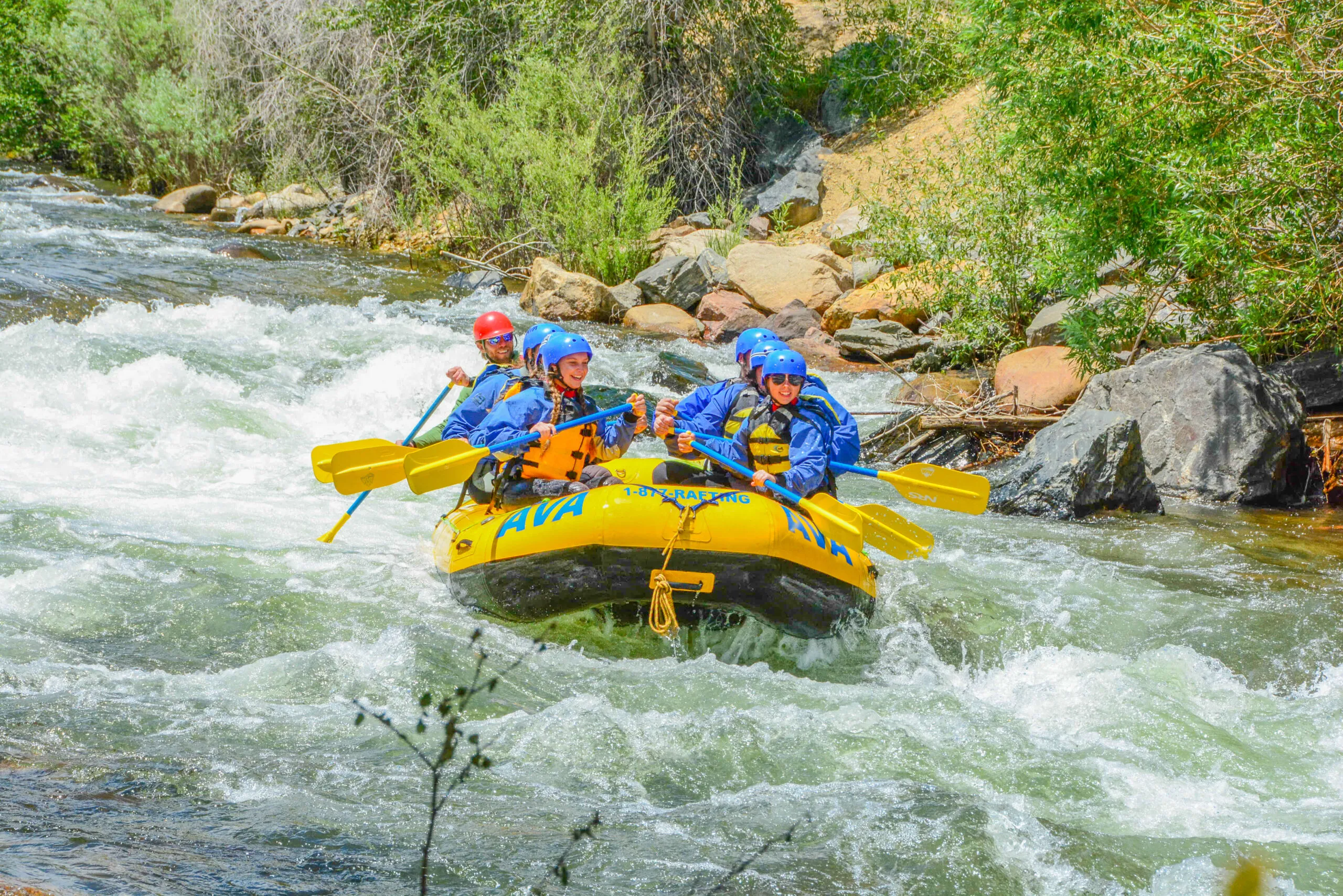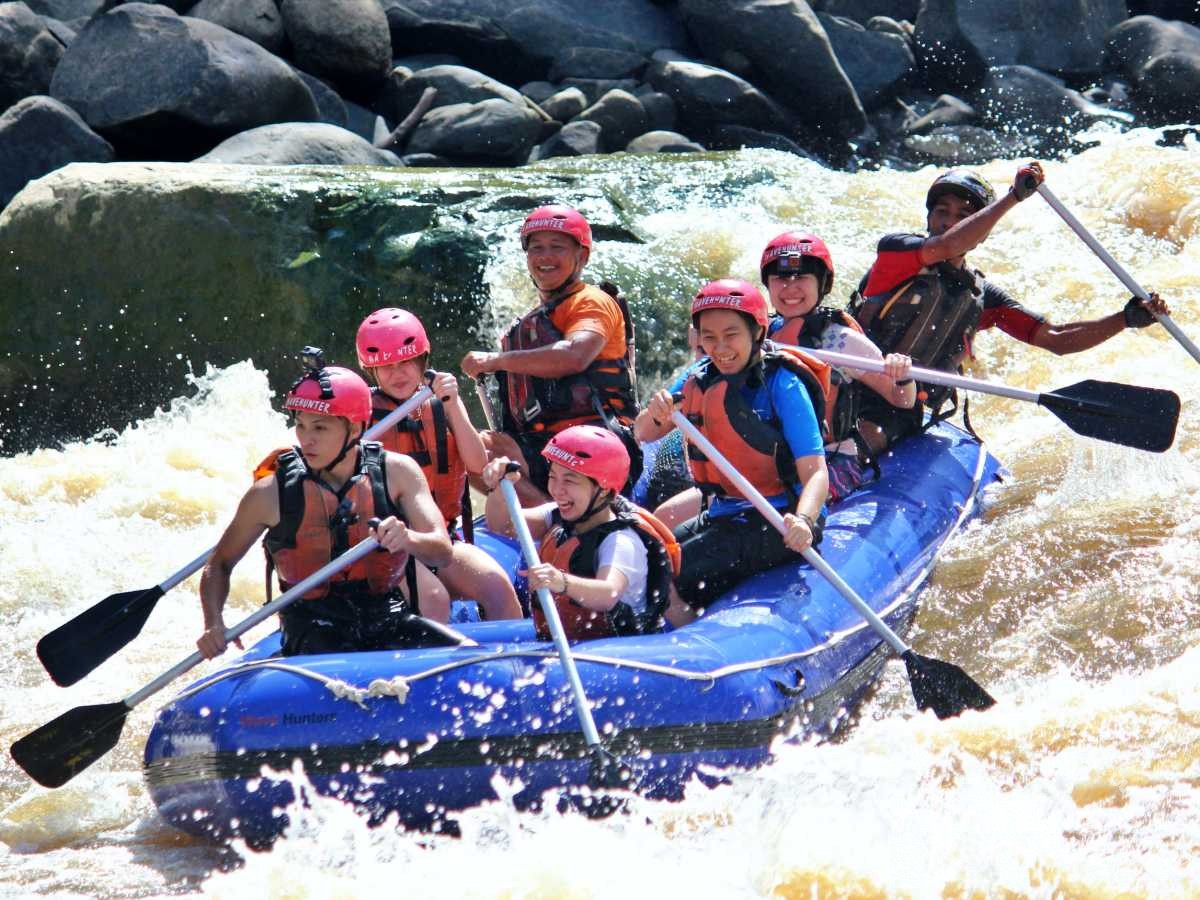The Ultimate Adventure: Water Rafting Advice
Getting started on a water rafting experience is an awesome experience that demands a blend of ability, prep work, and respect for nature's formidable pressures. As the thrill of the river pushes you onward, browsing through spins and transforms, the art of water rafting introduces itself as a test of both physical expertise and psychological acuity.
Necessary Gear for Water Rafting
To guarantee security and convenience throughout water rafting tours, it is essential to furnish oneself with the essential equipment tailored to this adventurous task. The first and most essential tool is a well-fitted individual flotation gadget (PFD) or life coat. This is non-negotiable for all rafters, as it provides buoyancy in situation of unexpected immersion in water. In addition, a strong safety helmet is important to shield versus head injuries, particularly in rough waters or if tossed off the boating.
Moreover, correct shoes is crucial for maintaining good grasp and shielding the feet from unsafe surface areas or sharp rocks. Neoprene booties or water footwear are suggested for this purpose. It is likewise recommended to use quick-drying clothes, such as a wetsuit or breakout guard, to manage body temperature level and avoid hypothermia in cool water conditions.
Finally, a trustworthy paddle is necessary for maneuvering with the water successfully. It ought to be light-weight yet durable to withstand the roughness of rafting. By purchasing these necessary items of gear, rafters can appreciate their experience on the water with self-confidence and comfort.
Selecting the Right Rafting Route
When planning a water rafting journey, choosing the ideal rafting path is critical for a safe and pleasurable experience. Variables such as the level of difficulty, water conditions, and the size of the path must all be considered prior to getting started on your journey.
Firstly, analyze your team's ability degree and experience. Various rafting paths are categorized based on problem degrees varying from Class I (simple) to Course VI (dangerous and very difficult) It is essential to select a course that aligns with the capabilities of all individuals to guarantee everybody's safety and pleasure.
In addition, take into consideration the water conditions of the route. Some paths may have tranquil waters suitable for newbies, while others may have solid currents and challenging rapids that require more advanced abilities. Researching the water levels and prospective threats of the path ahead of time can help you make an informed decision.
Lastly, think about the size of the rafting route. Longer courses might require more time and stamina, so select a path that fits within your group's timeframe and physical capabilities. By thoroughly picking the best rafting path, you can set yourself up for a remarkable and exhilarating adventure on the water.
Security Preventative Measures on the Water
Taking into consideration the significance of choosing the appropriate rafting course for a secure and delightful experience, it is vital to focus on safety precautions on the water to minimize prospective risks and ensure an effective journey. Before starting a water rafting journey, guarantee all participants use effectively suitable personal flotation protection devices (PFDs) and helmets to protect against crashes. It is essential to listen diligently to the guide's safety and security instruction, which typically covers paddling strategies, what to do in case the plethora flips, and just how to assist others if required. Maintaining communication with the guide and fellow rafters is crucial throughout the trip to coordinate activities and respond immediately to any review directions or signals. In the event of a person dropping over the top, adhere to the guide's directions for swift and reliable rescue procedures. Finally, know the water problems, such as rapids and challenges, and adjust your paddling techniques appropriately to browse securely via the course. By sticking to these safety precautions, you can improve the general experience and lessen possible threats while water rafting.
Grasping Paddling Techniques
Creating effectiveness in paddling methods is necessary for navigating through differing water problems and guaranteeing a successful water rafting experience. White Water Rafting Colorado. Appropriate paddling not just assists in steering the raft effectively yet additionally adds to the overall control and team effort needed for a pleasurable and secure journey
This stroke includes dipping the paddle blade completely right into the water and pulling it back alongside the plethora, supplying propulsion and steering. By grasping the forward and backward strokes, rafters can successfully control the speed and instructions of the raft.

Tips for Handling Rapids Like a Pro
To succeed in browsing difficult river conditions, adept water rafters use their understood paddling techniques with precision and finesse when dealing with rapids like experienced professionals. This rhythm assists the boating preserve its program and security in the middle of the stormy waters.

Verdict
In conclusion, water rafting calls for vital equipment, careful course selection, safety preventative measures, grasping paddling techniques, and handling rapids with knowledge. By following these pointers and methods, adventurers can ensure a effective and satisfying rafting experience on the water.

Taking into consideration the importance of picking the right click here now rafting path for a pleasurable and safe experience, it is essential to focus on security preventative measures on the water to mitigate prospective risks and guarantee a successful adventure. Eventually, refining paddling methods is essential to a successful and awesome water rafting experience.
In conclusion, water rafting needs essential gear, careful route choice, safety and security preventative measures, grasping paddling strategies, and handling rapids with proficiency.